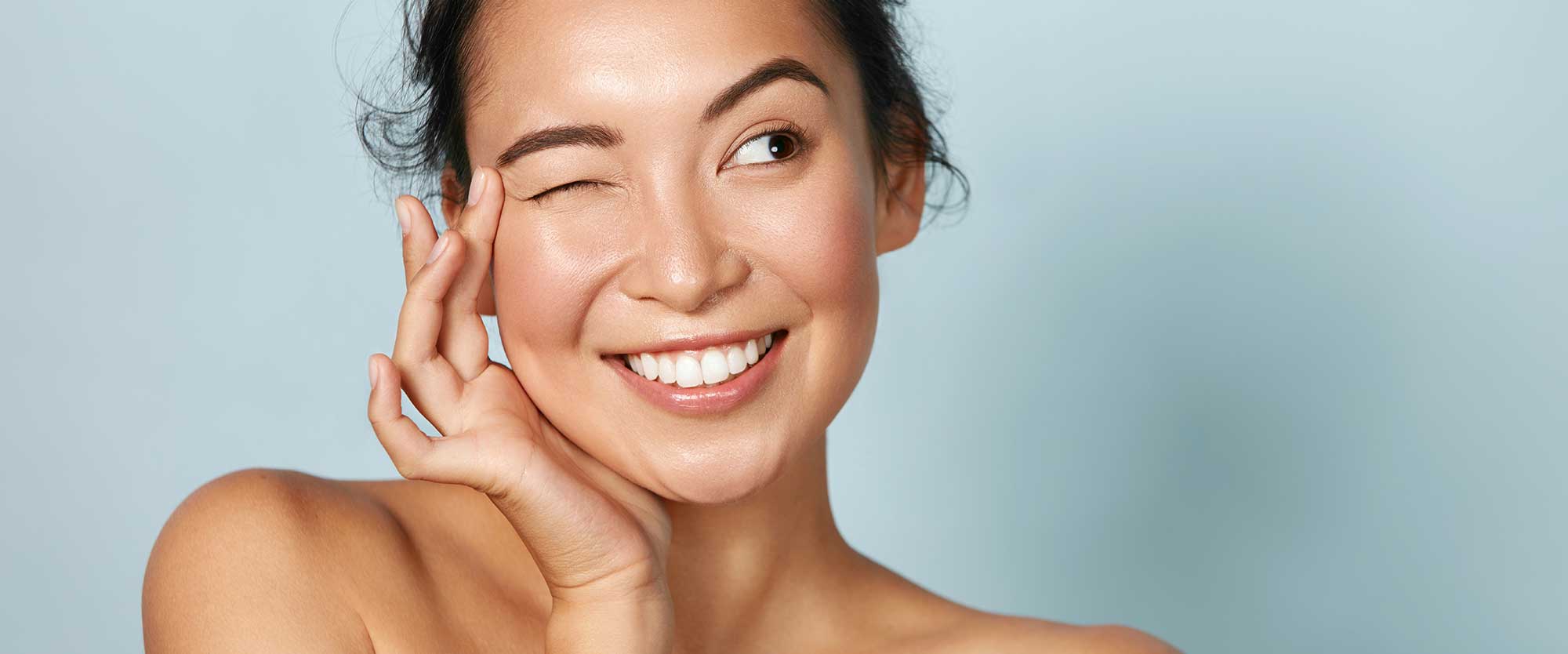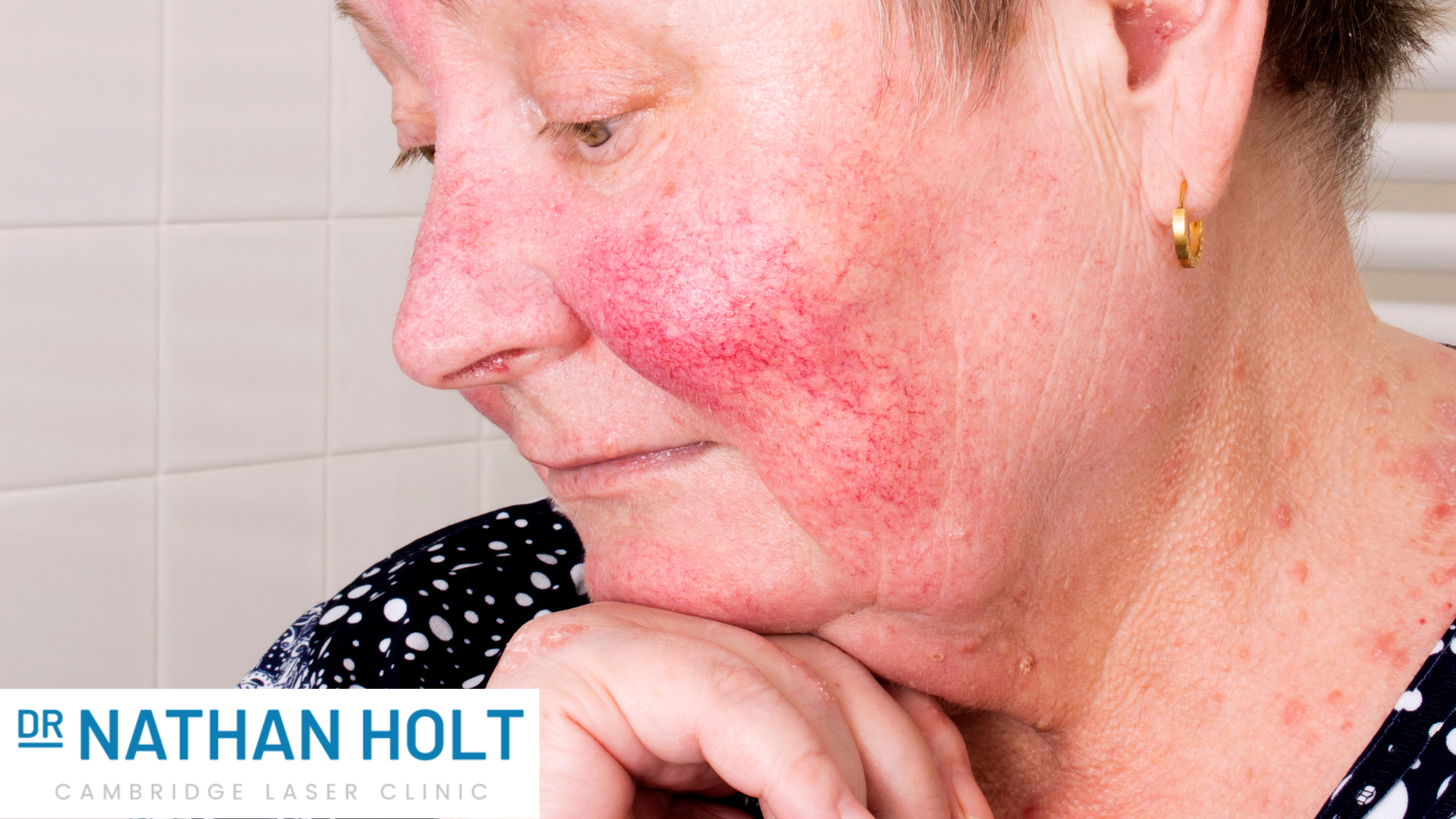April marked Rosacea Awareness Month, a time dedicated to spreading awareness about this chronic skin…

Dynamic Wrinkles: Your Comprehensive Guide to Non-Surgical Treatment Options
Contrary to popular belief, not all wrinkles are created equally. Or for that matter, in the same way. Some wrinkles manifest as a result of skin thinning, sagging and drooping, as part of the natural ageing process. Elsewhere, other wrinkles have the potential to appear much sooner, simply due to the unique way a person’s skin creases and folds when they smile, frown and so on.
These two types of wrinkles call for equally different approaches to minimising their appearance. The latter – dynamic wrinkles – are the target of Botox muscle relaxing injections. But there are several other treatments available for dynamic wrinkles, so it’s important to consider all of the options available, before deciding which is right for you.
Understanding Dynamic Wrinkles
Dynamic wrinkles, often referred to as expression lines, are a common concern for men and women of a broad range of ages. These wrinkles are different from static wrinkles, as they form due to repeated facial muscle movements over time.
While they are a natural part of the ageing process, they can be a source of concern for those who wish to maintain a smoother and more youthful appearance.
The Manifestation and Onset of Dynamic Wrinkles
Dynamic wrinkles manifest as fine lines and creases that appear when certain facial expressions are made. These expressions, such as smiling, frowning and squinting, cause the underlying facial muscles to contract. Over time, the repetition of these movements leads to the development of lines that become more pronounced, especially as the skin’s elasticity diminishes with age.
Dynamic wrinkles often start appearing in a person’s late 20s to early 30s, but can progressively deepen as they age.
Factors Influencing Dynamic Wrinkles
As with most issues pertaining to the most common signs of ageing, there are several factors that can influence when and to what extent dynamic wrinkles develop.
Examples of which include:
- Genetics: Genetic predisposition plays a significant role in how prone an individual is to developing dynamic wrinkles. People with a family history of early wrinkling are more likely to experience them themselves.
- Sun Exposure: Prolonged and unprotected sun exposure accelerates the breakdown of collagen and elastin fibres in the skin, making it more susceptible to dynamic wrinkles.
- Smoking: Smoking reduces blood flow to the skin, resulting in decreased oxygen and nutrients reaching the skin cells. This leads to premature ageing and the development of wrinkles.
- Facial Expressions: Repeated facial movements and expressions contribute to the formation of dynamic wrinkles. Those with highly expressive faces may be more susceptible.
- Skin Type: Individuals with naturally dry skin may experience dynamic wrinkles earlier, as dry skin tends to show signs of ageing more quickly.
- Lifestyle Factors: Poor diet, lack of sleep, stress and inadequate hydration can all contribute to the development of dynamic wrinkles.
At this point, it’s worth noting that while some of the factors that can affect dynamic wrinkle development are within the direct control of the individual in question, they have no influence over the others.
Prevention Strategies for Dynamic Wrinkles
Extensive research has shown that preventative measures can be highly effective in slowing the manifestation of dynamic wrinkles.
These include:
- Sun Protection: Regular use of broad-spectrum sunscreen with at least SPF 30 helps shield the skin from harmful UV rays, preserving its youthful appearance.
- Hydration and Nutrition: Adequate hydration and a balanced diet rich in antioxidants, vitamins and minerals support healthy skin and collagen production.
- Effective Skincare Routine: Using skincare products containing ingredients like retinoids, hyaluronic acid and peptides can improve skin texture and reduce the appearance of wrinkles.
- Facial Exercises: Gentle facial exercises and massage techniques can help improve blood circulation and muscle tone, potentially reducing the prominence of dynamic wrinkles.
Each of the above can prove beneficial at any time of life, but it is most effective when started from an early stage.
Non-Surgical Treatment Options for Dynamic Wrinkles
Where dynamic wrinkles take a toll on a person’s self-esteem, a broad range of non-surgical treatments can effectively reverse this common sign of ageing. Each of the available options has its own unique pros and cons, with some being better suited to some individuals than others.
Here’s a brief overview of the most popular and effective non-surgical treatments for dynamic wrinkles:
- Botox Injections:
- How it Works: Botox is a purified protein that temporarily relaxes targeted facial muscles, reducing the appearance of wrinkles.
- Results: Results typically become visible within a few days and can last for several months.
- Aftercare: Minimal downtime; avoid rubbing or massaging the treated area for a few hours.
- Pros: Quick procedure, minimal discomfort, natural-looking results.
- Cons: Temporary effects, potential for slight bruising or swelling.
- Dermal Fillers:
-
- How it Works: Dermal fillers add volume and plumpness to the skin, smoothing out wrinkles.
- Results: Immediate improvement, with results lasting several months to a year.
- Aftercare: Mild swelling and bruising may occur; avoid excessive sun exposure.
- Pros: Immediate results, versatility in treating different types of wrinkles.
- Cons: Temporary effects, possibility of minor side effects.
- Chemical Peels:
-
- How it Works: Chemical peels use a chemical solution to exfoliate the outer layer of skin, revealing smoother skin underneath.
- Results: Gradual improvement in skin texture and reduction of fine lines over a few weeks.
- Aftercare: Sun protection and gentle skin care regimen to aid in healing.
- Pros: Treats multiple skin concerns, stimulates collagen production.
- Cons: Potential for redness, peeling and temporary sensitivity.
- Microdermabrasion:
-
- How it Works: Microdermabrasion exfoliates the skin using fine crystals or a diamond-tipped wand, promoting skin rejuvenation.
- Results: Gradual improvement in skin texture and reduction of fine lines.
- Aftercare: Mild redness; avoid sun exposure and use gentle skincare products.
- Pros: Non-invasive, minimal discomfort, can be used on various skin types.
- Cons: May require multiple sessions for optimal results.
- Laser Therapy:
-
- How it Works: Laser treatments use targeted energy to stimulate collagen production and improve skin texture.
- Results: Gradual improvement over several weeks to months.
- Aftercare: Sun protection and gentle skincare; avoid direct sun exposure.
- Pros: Effective for deeper wrinkles, long-lasting results.
- Cons: Potential for redness, swelling and downtime.
- Radiofrequency (RF) Therapy:
-
- How it Works: RF therapy delivers controlled heat to stimulate collagen production and tighten skin.
- Results: Gradual improvement over a few months; results can last up to a year.
- Aftercare: Minimal downtime; sun protection and gentle skincare recommended.
- Pros: Non-invasive, minimal discomfort, gradual and natural-looking results.
- Cons: Multiple sessions may be required.
OTC Topicals and Everyday Skincare
There’s at least some truth to the claim that everyday topicals and OTC skincare products can contribute to youthful-looking skin. But when it comes to noticeable and lasting improvement to dynamic wrinkles, standard skincare products are generally ineffective.
This is due to the fact that such products are designed to exfoliate, moisturise, nourish and generally enhance health. But they fall short of being able to physically alter the structure of the skin, which would be necessary to address deep-set dynamic wrinkles.
If you undergo any of the above treatments to reduce the appearance of dynamic wrinkles, your practitioner may recommend specialist topicals as complementary measures to optimise the results of the procedure. However, topicals alone are not capable of making a noticeable difference to dynamic wrinkles.
For more information on non-surgical treatments for dynamic wrinkles or to discuss any aspect of your beauty goals in more detail, contact Cambridge Laser Clinic today for an obligation-free consultation.



